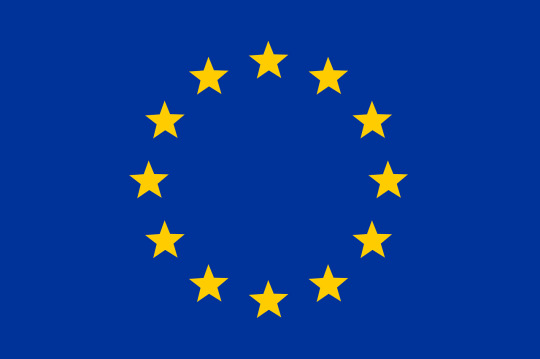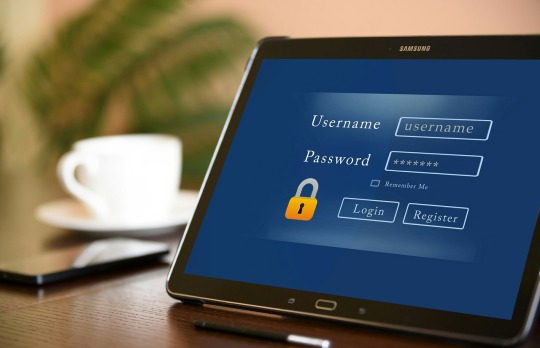Text
Understanding the European Sustainability Reporting Standards (ESRS): Environmental Protocols

I've been diving deep into the European Sustainability Reporting Standards (ESRS) established by the European Financial Reporting Advisory Group (EFRAG). These standards are critical for European companies as they mandate detailed disclosures about environmental practices alongside traditional financial reporting.
Overview of ESRS
The ESRS aim to standardize how companies across Europe report on sustainability issues, ensuring they account for both their operational impacts and their broader influences on society and the environment. This comprehensive approach is vital for stakeholders who seek to understand the full scope of a company's practices.
Focus on Environmental Standards
I find the environmental components of the ESRS particularly important. They require companies to be transparent about their environmental footprint and proactive in reducing their impact.
Key Environmental Disclosures
Emission Reporting: The standards require companies to disclose all emissions, including direct, indirect, and those from the broader supply chain. This comprehensive emission reporting helps paint a clear picture of a company's environmental impact.
Resource Usage: Companies must also report on their consumption of crucial resources like water and energy. The goal is to encourage more efficient and sustainable resource management.
Biodiversity Impact: The standards compel companies to report how their operations affect biodiversity. This includes their use of land and the potential impacts on ecosystems, which is critical for reducing negative environmental effects.
Circular Economy Practices: The ESRS promote practices that reduce waste and increase the reuse and recycling of materials. This push towards a circular economy is intended to make business practices more sustainable.
The Importance of These Standards
To someone committed to promoting environmentally responsible business practices, the ESRS are not merely regulations—they are essential tools for pushing companies towards greater ecological responsibility. These standards encourage transparency and innovation, helping companies to reduce their environmental impact.
Further Exploration
For those interested in a deeper understanding of how these standards can be implemented, I've discussed these topics more thoroughly in a specific post. You can read more about it here. This discussion offers detailed insights into the practical application of the ESRS for businesses aiming to enhance their sustainability practices.
To conclude, the environmental protocols within the ESRS are crucial to my work in promoting better business practices that respect and protect our planet. They provide clear, actionable guidance for companies looking to improve their sustainability efforts. For anyone involved in business or environmental advocacy, understanding and applying these standards is key to driving positive change.
0 notes
Text
My ESRS Odyssey: A Deep Dive into Sustainability Reporting

I recently embarked on a journey through the complex yet fascinating world of the European Sustainability Reporting Standards (ESRS), specifically tackling the Cross-Cutting Requirements. It’s been a rollercoaster of learning, adapting, and innovating, and I’m here to spill the tea on what it’s all about. 🌍✨
The Awakening:
When the ESRS Cross-Cutting Requirements were announced, it felt like a wake-up call for businesses across Europe, mine included. It wasn’t just about adhering to new rules; it was an opportunity to redefine our approach to sustainability and transparency. This was our chance to lead in corporate sustainability, and I was all in for the ride.
Charting the Course:
Deciphering the Code: The first leg of my journey involved unraveling the ESRS Cross-Cutting Requirements. It was like decoding a new language, but understanding these standards was crucial for setting our sustainability reporting on the right path.
Assembling the Dream Team: Recognizing the magnitude of the task, I rallied a team of eco-warriors from across our organization. Together, we were determined to navigate these waters, armed with our diverse skills and a shared passion for sustainability.
The Data Quest: Central to our ESRS compliance efforts was the quest for accurate and comprehensive environmental data. This step was both challenging and enlightening, pushing us to innovate in how we collect and report sustainability data.
Engaging the Realm: A key part of our journey was engaging with our stakeholders. Through transparent communication, we sought their insights and feedback, ensuring our sustainability reports were not just compliant but truly impactful.
Empowering Through Knowledge: One of the most transformative aspects of this journey was the power of education. We launched targeted training sessions to empower our team, fostering a culture of sustainability and shared responsibility.
Weaving the Sustainability Tapestry: Crafting our sustainability reports under the ESRS framework became an exercise in storytelling. This was our chance to share our sustainability narrative, weaving together our challenges, achievements, and future aspirations.
Seeking the Seal of Approval: To enhance the credibility of our reports, we pursued external assurance. This step was crucial in validating our efforts and reinforcing our commitment to transparency and sustainability.
Reflections from the Journey:
Navigating the ESRS Cross-Cutting Requirements has been an eye-opening experience, challenging us to elevate our sustainability reporting and embrace transparency like never before. It’s been a journey of growth, learning, and, most importantly, leading by example in the corporate sustainability arena.
A Beacon for Fellow Travelers:
For anyone about to embark on this journey, remember: the ESRS Cross-Cutting Requirements are more than just a compliance checklist; they’re a blueprint for meaningful sustainability reporting. Embrace this opportunity to innovate, to engage, and to lead in sustainability.
For a deeper dive into the ESRS Cross-Cutting Requirements and practical steps towards mastering them, I highly recommend checking out this comprehensive guide: https://socious.io/blog/esrs-cross-cutting-requirements. It’s been an invaluable resource in my journey, offering clarity and direction through the complexities of sustainability reporting.
Here’s to all of us making a difference, one sustainability report at a time. 🌱💚
0 notes
Text
My Adventure Through the SEC’s Climate Disclosure Labyrinth

I’ve been on quite the adventure lately, diving deep into the world of the SEC’s new climate-related disclosure requirements. It’s been a journey filled with challenges, revelations, and a whole lot of learning. I wanted to share my story with you all, hoping it might shed some light on this complex topic and maybe even inspire a few of you.
The Awakening
It all started with a realization: these SEC mandates aren’t just another set of rules to follow—they’re a call to action for businesses to be transparent about their environmental impact. This was more than compliance; it was about contributing to a larger conversation on sustainability.
The Quest for Knowledge
Understanding the full scope of these requirements was my first challenge. It meant not just reading through the mandates but also grasitating why they matter. This wasn’t just about us as a business; it was about our place in the world and our impact on the environment.
Gathering the Data
Data became my best friend (and sometimes my biggest headache). Collecting accurate, comprehensive environmental data was crucial. It was a painstaking process, but it laid the foundation for everything that followed.
Joining Forces
One of the most rewarding parts of this journey was engaging with others—team members, stakeholders, industry peers. Their insights and perspectives enriched the process, turning it into a collaborative mission rather than a solitary quest.
Empowerment Through Education
I quickly realized the power of knowledge. Educating our team about the importance of these disclosures and how they could contribute was a game-changer. It turned compliance from a top-down directive into a shared goal.
Transforming Risks into Opportunities
Facing our environmental risks head-on was daunting, but it also opened up opportunities for innovation and improvement. It was about turning challenges into chances to do better.
Crafting the Narrative
Writing our disclosures felt like telling our story—a story of challenges, changes, and commitments. It was our chance to share with the world not just what we’re doing but why it matters.
The Seal of Trust
Opting for external verification of our disclosures added a layer of trust and credibility. It was a testament to our commitment to accuracy and transparency.
The Never-Ending Journey
What I’ve learned is that compliance isn’t a destination; it’s a continuous journey. It’s about constantly striving to be better and more transparent.
Beyond Compliance
Ultimately, this journey through the SEC’s climate disclosure requirements has been about more than just meeting mandates. It’s been an opportunity for growth, for leadership in sustainability, and for making a real difference.
For anyone looking to navigate these waters, I found an incredible guide that helped light the way: The Compliance Guide on SEC’s Climate-Related Disclosures: 10 Steps to Mastery. It’s a resource I highly recommend for anyone embarking on this journey.
This adventure has been eye-opening, challenging, and ultimately rewarding. It’s shown me the power of transparency, the importance of environmental accountability, and the impact that one company can have on the broader fight against climate change. Here’s to all of us making a difference, one disclosure at a time.
0 notes
Text
Blockchain: The Future of Trust is Here

Hey Tumblr fam,
Let's talk about something revolutionary – blockchain. It's not just for crypto enthusiasts anymore. This technology is on the brink of transforming how we trust, transact, and interact in our increasingly digital world.
At its essence, blockchain is about decentralization. Instead of storing data in a single location, it's spread across a vast network, making it nearly impossible to hack or manipulate. This is a game-changer for trust. No more middlemen. Transactions are verified by consensus, ensuring fairness and security.
Transparency is another hallmark of blockchain. Every transaction is recorded and visible to everyone in the network, which drastically reduces fraud and enhances accountability.
And then there's the magic of smart contracts. These are not your average contracts but are programmed to automatically execute when conditions are met. Imagine renting an apartment, buying a car, or securing a loan, all seamlessly and without the need for intermediaries.
Security is unparalleled. The blockchain's structure makes it a fortress against data breaches, offering a level of protection that traditional systems can't match.
But perhaps the most exciting aspect is the potential for revolutionizing identity verification. Blockchain could give us control over our digital identities, making everything from online voting to banking safer and more reliable.
There are hurdles, of course – scalability, regulation, and accessibility, to name a few. But the journey is as exciting as the destination.
What do you think? Is blockchain the future of trust, or are there obstacles it can't overcome?
For more insights, check out this brilliant article I found: Blockchain, Social Change, Trust & Transparency.
Can't wait to hear your thoughts!
0 notes
Text
Neurodiversity
We're talking ADHD, autism, dyslexia - all the amazing brainpower variations that make the world a more interesting place. And guess what? This neurodiversity is a superpower in the workplace!
Why? Let's break it down:
Thinking Outside the Box: Neurodivergent folks often see things differently, coming up with crazy-cool ideas that might get missed by the neurotypical crowd. Innovation station, anyone?
Deep Dives: Ever get hyperfocused on something? That's a neurodivergent superpower! They can become subject-matter experts in record time, diving deep into complex issues.
Detail Detectives: Some neurodivergent minds have a hawk-eye for detail. They'll spot errors no one else sees, keeping your projects on point.
So how do we harness this awesome power?
Embrace It! Let everyone know your workplace welcomes neurodiversity. Spread awareness and celebrate different thinking styles.
Make Adjustments: Small changes can make a big difference. Offer flexible work arrangements, quiet spaces, or noise-cancelling headphones.
Open Communication: Talk openly about neurodiversity! The more everyone understands, the more supportive the environment becomes. ️
By creating a space that celebrates neurodiversity, you get:
Innovation Explosion: Diverse perspectives lead to more creative solutions and problem-solving approaches.
Productivity Power-Up: Supported and valued employees are happy and productive employees!
Top Talent Magnet: Showcasing your commitment to inclusion attracts the best and brightest, regardless of their neurotype.
Neurodiversity isn't a weakness, it's a strength! Let's build workplaces that celebrate different ways of thinking.
Want to learn more? Check out this blog post for a deep dive into creating a neurodiversity-friendly work environment! https://socious.io/blog/the-untapped-potential-embracing-neurodiversity-in-the-workplace
8 notes
·
View notes
Text
The Digital Identity Dilemma: SSI vs. SBT

In the ever-evolving digital world, the way we manage our digital identities is becoming a hot topic. I've been diving deep into the realms of Self-Sovereign Identity (SSI) and Soulbound Tokens (SBT) and stumbled upon a super insightful blog that shed light on why SSI might just be the better option for managing digital credentials. Let's unpack this together.
Self-Sovereign Identity (SSI): Your Digital Autonomy
SSI is all about putting you in the driver's seat of your digital identity. It's a decentralized approach that lets individuals control their personal data. Imagine having a digital wallet where you store all your credentials, and you get to decide who sees what. It's like being the gatekeeper of your own digital castle.
Soulbound Tokens (SBT): The Blockchain's Promise
On the flip side, SBTs are like digital badges of honor that are permanently attached to your blockchain identity. They represent your credentials, achievements, and affiliations in a non-transferable way. Think of them as tattoos for your digital soul—once you have them, they're there for good.
Why I'm Leaning Towards SSI
Control and Privacy
With SSI, your data is yours, and yours alone. You have complete control over who gets access to your credentials. It's a privacy advocate's dream come true, offering a level of security and autonomy that's hard to beat.
Flexibility and Interoperability
SSI doesn't tie you down to any single platform or blockchain. It's designed to work across various systems, making your digital identity as versatile and adaptable as you are.
The Power to Update
Life changes, and so do our credentials. SSI allows you to easily update or revoke your digital credentials, ensuring your digital identity remains as dynamic as your real-life one.
Broad Adoption Potential
SSI's open and flexible nature means it can be adopted across a wide range of sectors and industries. It's not just a niche blockchain solution but a comprehensive approach to digital identity management.
Wrapping It Up
After exploring both sides, I'm convinced that SSI offers a more holistic and user-friendly approach to managing our digital selves. The autonomy, privacy, and flexibility it provides align perfectly with the digital age's demands.
For those curious to dive deeper into this comparison, I highly recommend checking out this neutral and informative blog: explore here. It's a great read that offers a detailed look into the pros and cons of each approach.
So, what do you think? Is the future of digital identity in the hands of SSI, or do SBTs have a role to play in shaping our digital worlds? Let's chat in the comments!
Remember, as we navigate through the digital cosmos, the way we manage our identities is crucial. Whether it's SSI, SBT, or another emerging technology, the goal is to find a solution that respects our privacy, autonomy, and need for control. Here's to a future where our digital identities are as secure and authentic as our real-world ones.
0 notes
Text
Blockchain & Ethical Philanthropy: My Personal Dive into a Future of Impactful Giving
In the digital age, where innovation meets intention, the fusion of blockchain technology with the principles of ethical philanthropy has opened up a new frontier for those of us passionate about making a real difference. My exploration into this promising intersection was deeply inspired by a thought-provoking article I found on Socious, which delves into how blockchain and AI are teaming up to push the boundaries of ethical philanthropy and sustainable impact projects. This journey has not only broadened my horizons but also reinforced my commitment to harnessing technology for social good.
The Revolutionary Role of Blockchain in Philanthropy
At its core, blockchain technology is reshaping the philanthropic landscape. Its principles of decentralization, transparency, and security introduce a novel paradigm for giving, where every contribution is traceable, impactful, and reaches its intended destination without unnecessary intermediaries. This shift promises to restore trust in philanthropic efforts and streamline the path from donor to beneficiary.
Accelerating Sustainability: The Blockchain Advantage
Blockchain's potential to fast-track sustainability efforts is unparalleled. By enabling direct and efficient support for social impact projects across the globe, it dismantles traditional barriers, fostering a decentralized network of change-makers. This innovative approach not only enhances the effectiveness of individual contributions but also propels us towards our shared goal of a sustainable future more rapidly.
My Personal Commitment to Making a Difference
Driven by a deep-seated desire to contribute to a better world, my engagement with blockchain technology has opened new avenues for impactful giving. The journey towards sustainability is fraught with challenges, necessitating a blend of innovation, collaboration, and persistence. Blockchain emerges as a beacon of hope, offering a platform where our efforts are transparent, direct, and most importantly, meaningful.
Envisioning a Future Powered by "Blockchain for Good"
The notion of "blockchain for good" encapsulates a hopeful vision for the future, where technology is not just a tool for advancement but a catalyst for positive change. It imagines a world where the challenges of today—be it environmental degradation, social inequality, or beyond—are addressed through the ethical application of blockchain technology, leading to a more equitable and sustainable world.
A Reflection and Invitation to Action
As I reflect on my journey through the realms of blockchain and ethical philanthropy, my belief in the transformative power of technology to foster positive change has only grown stronger. The insights from the Socious blog have been invaluable, shaping my understanding and approach to supporting social impact projects. We stand at the brink of a technological revolution with the power to redefine philanthropy and sustainability.
I invite you to join me in this exploration, as we leverage the potential of blockchain to enact lasting change. Together, let's navigate this exciting path towards a future where our collective efforts in ethical philanthropy and sustainability create a ripple effect of positive impact across the globe.
#Social Impact projects#accelerate sustainability#contribute to sustainability#be more sustainable#blockchain for good
0 notes
Text
Crafting Job Descriptions That Inspire: A Guide to Impact Hiring for Social Good
In the realm of hiring for social impact roles, the art of crafting a compelling job description is crucial. It's not just about listing the skills and qualifications needed; it's about painting a picture of the impact the role has, the mission it serves, and the kind of individual who would thrive in it. From my experience and insights gained from various resources, including an invaluable guide I recently came across, here's my take on creating job descriptions that resonate with potential candidates for social good jobs.
The Heart of Social Impact Hiring
When we talk about hiring for social impact jobs, we're looking for more than just a fit for the role. We're seeking individuals who align with the organization's mission and are passionate about making a difference. This alignment isn't just beneficial; it's essential. It ensures that the candidate is not only capable of performing their duties but is also deeply committed to the cause. This commitment is what drives innovation, dedication, and, ultimately, the impact.
Crafting a Narrative
A job description for a social impact role should do more than list responsibilities and requirements. It should tell a story. This narrative should encapsulate the mission of the organization, the role's contribution to this mission, and the impact it has on the community or cause it serves. By weaving this narrative into the job description, we attract candidates who see themselves as part of this story, who are motivated by the impact they can have.
Language Matters
The language we use in job descriptions plays a pivotal role in attracting a diverse and qualified pool of candidates. It's about being clear, inclusive, and engaging. Clear language ensures that potential applicants understand the role and its requirements. Inclusive language makes sure that the job appeals to a broad audience, encouraging applications from individuals of diverse backgrounds. Engaging language captures the imagination and interest of potential candidates, making them excited about the possibility of joining your team.
Practical Tips for Impactful Descriptions
Based on the guide I referenced earlier and my own experiences, here are a few practical tips for crafting impactful job descriptions:
Start with Why: Begin by explaining why the role exists and its importance to the organization's mission and the broader social good.
Highlight Impact: Clearly articulate the impact the role has. Candidates should be able to see the difference they can make.
Be Inclusive: Use language that is welcoming to all potential applicants, avoiding jargon or terms that might inadvertently exclude people.
Focus on the Mission: Emphasize the organization's mission and values, and describe how the role contributes to these.
Encourage Passion: Invite candidates to share not just their qualifications but their passion for the cause.
For those interested in diving deeper into this topic, I found a comprehensive guide on Socious's blog that offers a wealth of information on creating impactful job descriptions for talent acquisition in the social impact sector. You can explore it further here.
In conclusion, crafting job descriptions for social impact roles is about more than just listing requirements. It's about storytelling, inclusivity, and highlighting the role's contribution to the mission. By focusing on these elements, we can attract candidates who are not only qualified but also deeply committed to driving social change.
0 notes
Text
Blockchain and Philanthropy: A Personal Journey Towards Trust, Transparency, and Traceability
In the ever-evolving landscape of philanthropy, the quest for trust, transparency, and traceability has led me down a path less traveled, where technology and social good intersect in the most innovative ways. My journey into the world of blockchain and its potential for revolutionizing philanthropy has been nothing short of enlightening. It's a narrative that intertwines my personal experiences with the broader implications of blockchain technology in fostering a more accountable and transparent world.
The Genesis of My Blockchain Epiphany
My exploration into blockchain was sparked by a growing disillusionment with traditional philanthropic practices. Stories of misallocated funds and opaque operations were becoming all too common, casting a shadow over the noble intentions of many impact-driven organizations. It was during this period of skepticism that I stumbled upon an intriguing concept: using blockchain technology to reimagine the foundations of philanthropy.
The idea was simple yet profound. Blockchain, with its decentralized ledger, immutable records, and transparent transactions, could offer a solution to the accountability and transparency woes plaguing the philanthropic sector. This revelation was not just a moment of clarity but a call to action. I delved deeper into understanding how blockchain could serve as the backbone for a new era of philanthropy.
Unpacking Blockchain's Potential for Philanthropy
At its core, blockchain is about trust. In a philanthropic context, this trust is twofold: trust that donations reach their intended destinations and trust that the impact of these contributions is real and measurable. Blockchain technology addresses these concerns through its inherent features.
Transparency: Blockchain's public ledger allows for a level of transparency previously unattainable. Every transaction, from donation to deployment, can be tracked and verified by anyone. This open access demystifies the journey of contributions, allowing donors to see exactly where their money is going and how it's being used.
Accountability: The immutable nature of blockchain records means that once a transaction is logged, it cannot be altered or deleted. This permanence ensures that organizations are held accountable for their actions, as every financial movement is permanently recorded and openly accessible.
Traceability: Blockchain enables the traceability of impacts. By tokenizing contributions and linking them to specific outcomes, it's possible to directly connect donations with the results they achieve. This not only provides donors with concrete evidence of their impact but also promotes a culture of result-based philanthropy.
My Personal Advocacy for Blockchain in Philanthropy
Inspired by the potential of blockchain to transform philanthropy, I became an advocate for its adoption. My mission was clear: to promote a philanthropic model that prioritizes transparency, accountability, and traceability. This wasn't just about championing a technology; it was about fostering a philanthropic ecosystem that values and rewards genuine impact.
In my advocacy, I've encountered both skeptics and believers. The skeptics question the scalability and practicality of integrating blockchain into existing philanthropic structures. The believers, on the other hand, see blockchain as the inevitable future of philanthropy—a tool that can bridge the trust gap and empower both donors and beneficiaries.
Bridging the Gap with Blockchain
The journey towards a blockchain-enabled philanthropy is not without its challenges. Technical complexities, regulatory hurdles, and the need for widespread adoption are significant barriers. Yet, the potential rewards far outweigh these obstacles. By harnessing blockchain, we can create a philanthropic landscape that is not only more efficient and transparent but also more inclusive and impactful.
For those interested in diving deeper into the intersection of blockchain and social change, I recommend exploring this insightful article. It offers a comprehensive look at how blockchain technology is paving the way for a new paradigm of trust, transparency, and accountability in social impact work.
Conclusion
My personal journey into the world of blockchain and philanthropy has been transformative. It has reshaped my understanding of what it means to give and how technology can enhance the integrity and effectiveness of philanthropic endeavors. As we stand at the cusp of this new era, the promise of blockchain offers a beacon of hope for a more transparent, accountable, and traceable philanthropic future. The path forward is clear; it's time to embrace the blockchain revolution in philanthropy.
1 note
·
View note